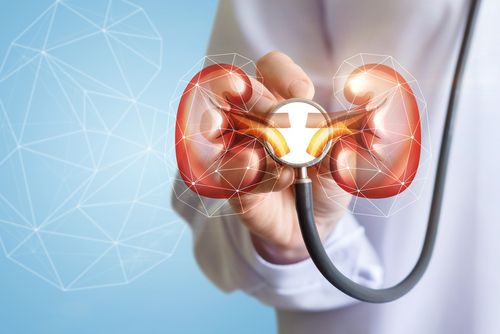SMA Type 1 Patients May Be at Greater Risk of Kidney Dysfunction, Study Finds
Written by |

People with spinal muscular atrophy (SMA) type 1 may have an increased risk of impaired kidney function, a small study suggests.
The study’s findings highlight the need to further evaluate non-muscular conditions associated with SMA type 1 and to identify co-adjuvant therapies to manage them.
The research was published in the article, “Impaired kidney structure and function in spinal muscular atrophy,” in the journal Neurology Genetics.
SMA is caused by mutations in the SMN1 gene, which leads to reduced production of the SMN protein. While motor nerve cells are those most vulnerable to SMN deficiency, decreased levels of this protein occur throughout the body, which may contribute to the development of the disease.
With new therapies to treat all types of SMA, including type 1 (the most common and one of the most severe types), patients are living longer, and thus the overall impact of SMN deficiency beyond motor function needs to be evaluated, scientists say.
In addition, an increased risk of renal toxicity is listed on the insert for Spinraza, the first therapy approved by the U.S. Food and Drug Administration to treat SMA, and similar therapies have been associated with acute tubular injury, the researchers wrote.
With this in mind, they evaluated whether kidney function was impaired in 13 children with SMA type 1 who died due to SMA complications.
Analysis of blood data showed that most of the children had values outside of the expected range for several molecules associated with kidney function, including creatinine and cystatin C. Most of them also had potentially harmful aggregates, called granular casts and amorphous crystals, and high levels of amino acids (the building blocks of proteins) in their urine, which are all linked with kidney damage.
Molecular and morphological analyses of kidney tissues of 12 patients as well as age- and sex-matched children without SMA showed that two-thirds of the SMA patients had several abnormalities highly associated with kidney disease.
Kidney tissues of children with SMA type 1 showed varying degrees of tubular damage, with scarring and abnormal calcium deposits, and significant changes in the levels of genes associated with kidney toxicity or kidney cystic disease.
Also, they had low levels of CaSR and CALB1 (proteins involved in the maintenance of their calcium balance, thus preventing accumulation of calcium deposits) and high levels of IGFBP1 and IGFBP3 — which has been associated with kidney damage and dysfunction — compared with the non-SMA children.
The researchers noted all these features were consistent with kidney dysfunction — more specifically kidney tubular dysfunction — which strongly suggests that most of the children with SMA type 1 had impaired kidney function before death.
Therefore, the study recommends that physicians consider this increased risk of impaired kidney function when treating their patients with SMA type 1.
The researchers also noted that since these patients are now living longer due to recently approved treatments, kidney disease may become a significant comorbidity, and future research should focus on identifying therapies to manage kidney dysfunction.
“Future studies will be important to determine whether impaired kidney function is a primary consequence of reduced SMN protein, a secondary consequence of muscle atrophy and bone disease, or more likely a combination of both,” the researchers said.






